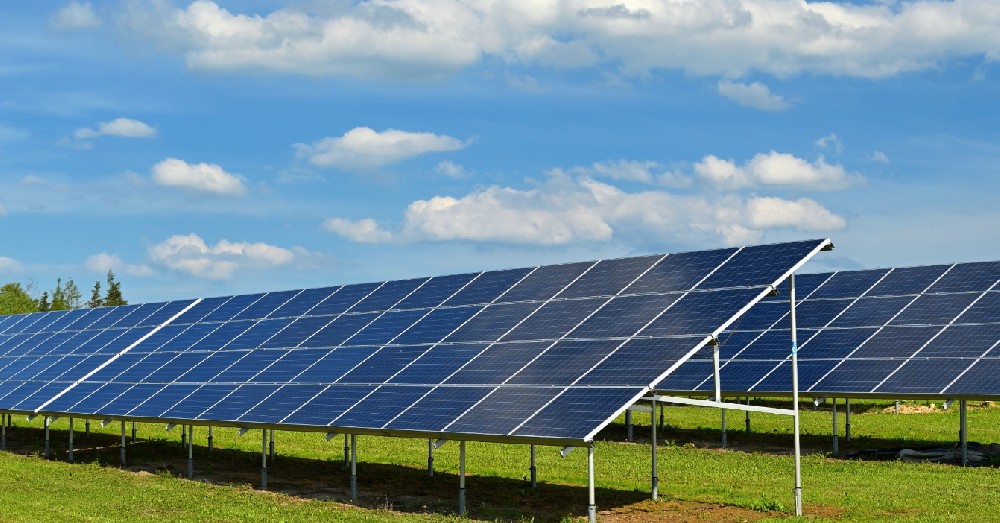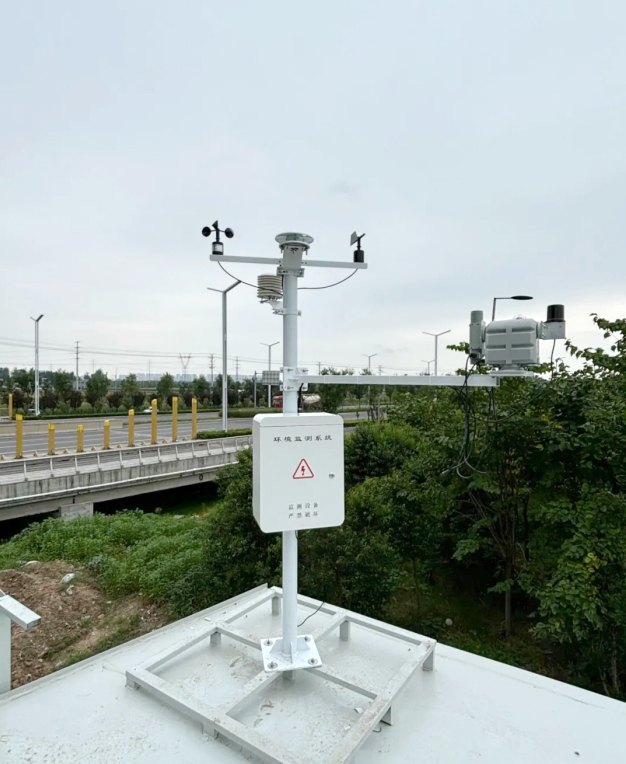

— Blogs —
—Products—
 Consumer hotline +8618073152920
Consumer hotline +8618073152920 WhatsApp:+8615367865107
Address:Room 102, District D, Houhu Industrial Park, Yuelu District, Changsha City, Hunan Province, China
Product knowledge
Time:2025-04-01 16:44:11 Popularity:67
As global demand for renewable energy continues to grow, photovoltaic (PV) power generation, as a crucial pillar of clean energy, is becoming increasingly significant. However, the efficiency and stability of photovoltaic systems are highly influenced by meteorological conditions, such as solar radiation intensity, temperature, humidity, and wind speed, which directly affect the performance of solar panels. To address this, photovoltaic monitoring meteorological stations have emerged as key equipment for optimizing the operation of solar power plants and improving energy management efficiency. This article will explore their core functions, advantages, maintenance tips, and their role in promoting sustainable energy development, providing practical and comprehensive information for customers.

A photovoltaic monitoring meteorological station is an environmental monitoring system tailored for solar power plants, integrating high-precision sensors to collect and analyze a range of meteorological data in real time. This data includes environmental temperature, humidity, wind speed, wind direction, atmospheric pressure, and various solar radiation parameters (such as tilted total radiation, horizontal total radiation, direct radiation, and diffuse radiation). With this information, plant managers can gain in-depth insights into how the environment affects power generation performance.
The system is renowned for its stability, precision, and intelligent, unmanned operation, fully meeting the high standards of professional meteorological observation. It is widely used in real-time monitoring of solar power plants, providing valuable data support for evaluating power generation quality, optimizing efficiency, and diagnosing faults.

Photovoltaic monitoring meteorological stations significantly enhance PV operations due to their unique capabilities:
With high-precision sensors (such as solar radiation sensors, temperature and humidity probes, and anemometers) operating around the clock, the station captures critical information such as light intensity, temperature, and wind conditions in real time. This data not only provides immediate feedback for daily management but can also predict power generation trends. For example, radiation data can be used to adjust the angle of solar panels, while temperature monitoring can provide early warnings of overheating, which could lead to efficiency loss.
Integrated with intelligent management systems, photovoltaic monitoring meteorological stations enable remote monitoring and automated operation. In the event of abnormal weather conditions or equipment issues, the system immediately triggers an alarm, prompting a quick response to minimize losses. Long-term data accumulation can also reveal the relationship between weather conditions and power generation efficiency, providing a foundation for plant design, equipment selection, and maintenance plans, thereby enhancing overall benefits.
Against the global backdrop of pursuing carbon neutrality, these stations indirectly promote energy saving and emission reduction by optimizing photovoltaic power generation efficiency. Accurate monitoring and intelligent adjustments reduce energy waste caused by adverse weather, improving solar energy utilization. As a core component of clean energy, the widespread use of photovoltaic power plants themselves replaces fossil fuels, reducing greenhouse gas emissions and improving air quality.
Whether in deserts, coastal areas, or on urban rooftops, photovoltaic monitoring meteorological stations can adapt to diverse environments. With advancements in photovoltaic technology, their data support will contribute to predictive analysis and intelligent grid development, maintaining their significant role in the development of green energy.

Photovoltaic monitoring meteorological stations are typically placed outdoors and are directly exposed to natural environmental conditions, which means their maintenance quality directly impacts data reliability and plant efficiency. Here are some practical maintenance suggestions:
- Regular Inspections: It is recommended to conduct a monthly inspection to check the sensor status and ensure normal data transmission. Check for wear, corrosion, or data deviations, and address issues promptly to ensure accuracy.
- Cleaning and Maintenance: Remove dust, weeds, or debris around the station, especially after sandstorms or heavy rainfall, to ensure ventilation and unobstructed measurement.
- Power Supply and Communication Maintenance: Inspect the power source (usually solar panels and batteries) and communication system to ensure uninterrupted operation. Regularly test backup power and replace aging components.
- Extreme Weather Protection: During heavy rain, strong winds, or thunderstorms, secure loose parts or temporarily shut down sensitive equipment. After the weather clears, check for damage and repair it promptly.
With meticulous daily maintenance and timely emergency handling, the meteorological station can operate stably over the long term, providing reliable support for photovoltaic power plants.

In today’s rapidly growing demand for renewable energy, photovoltaic monitoring meteorological stations are not just technical tools; they are also catalysts for industry transformation. By seamlessly connecting weather variables with power generation needs, they provide:
- Higher Output: Optimizing operations allows each photovoltaic panel to achieve its maximum potential.
- Cost Savings: Intelligent maintenance reduces failures and operational expenses.
- Sustainability: Enhancing solar efficiency contributes to achieving low-carbon goals.
For plant operators, investors, or policymakers, it is the ideal choice for realizing solar energy potential and environmental goals.
The prospects for photovoltaic monitoring meteorological stations are promising. As sensor technologies improve and artificial intelligence and the Internet of Things (IoT) are integrated, their capabilities will be further enhanced—from more precise weather forecasting to automated plant adjustments. These advances will optimize energy management, support grid stability, and play a more crucial role in the global pursuit of carbon neutrality.
In short, they are not just monitoring devices but forces shaping the future of solar energy. For stakeholders in the photovoltaic industry, they are a wise investment for improving efficiency and sustainability.

Photovoltaic monitoring meteorological stations are key partners on the path to efficient and sustainable energy. With precise monitoring, intelligent operation, and energy-saving advantages, they help photovoltaic plants tackle various challenges. Proper maintenance ensures reliability, while technological advancements bring greater potential. For customers, this system is a reliable tool for achieving excellent performance and a green future in the solar energy field, with every data point pushing the industry forward.
NBL-W-SRS-Solar-radiation-sensor-instruction-manual-V4.0.pdf
NBL-W-HPRS-Solar-Radiation-Sensor-Instruction-Manual-V3.0.pdf
Related recommendations
Sensors & Weather Stations Catalog
Agriculture Sensors and Weather Stations Catalog-NiuBoL.pdf
Weather Stations Catalog-NiuBoL.pdf
Related products
 Combined air temperature and relative humidity sensor
Combined air temperature and relative humidity sensor Soil Moisture Temperature sensor for irrigation
Soil Moisture Temperature sensor for irrigation Soil pH sensor RS485 soil Testing instrument soil ph meter for agriculture
Soil pH sensor RS485 soil Testing instrument soil ph meter for agriculture Wind Speed sensor Output Modbus/RS485/Analog/0-5V/4-20mA
Wind Speed sensor Output Modbus/RS485/Analog/0-5V/4-20mA Tipping bucket rain gauge for weather monitoring auto rainfall sensor RS485/Outdoor/stainless steel
Tipping bucket rain gauge for weather monitoring auto rainfall sensor RS485/Outdoor/stainless steel Pyranometer Solar Radiation Sensor 4-20mA/RS485
Pyranometer Solar Radiation Sensor 4-20mA/RS485
Screenshot, WhatsApp to identify the QR code
WhatsApp number:+8615367865107
(Click on WhatsApp to copy and add friends)